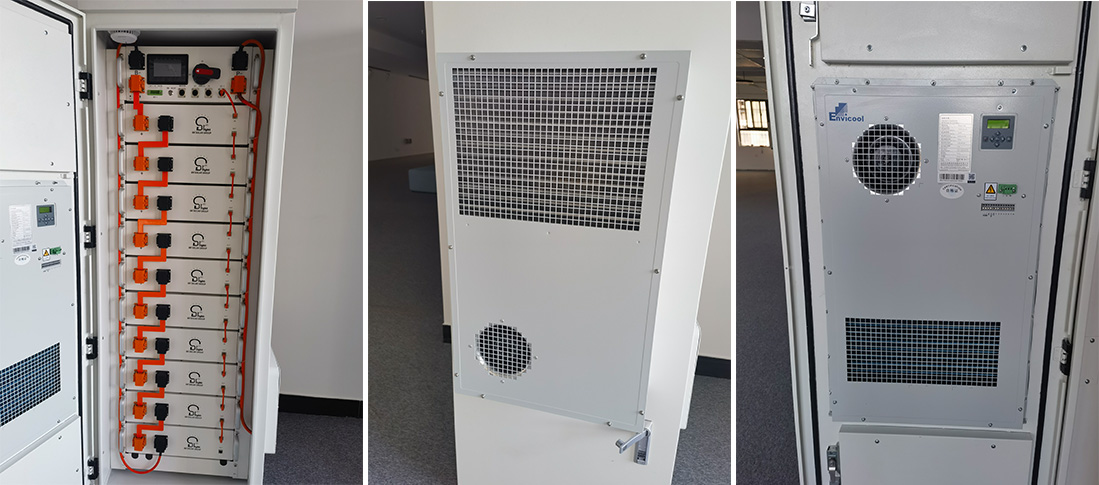In recent years, outdoor energy storage cabinets have been in an upward development period, and their application scope has been continuously expanded. But do you know about the components of outdoor energy storage cabinets? Let’s take a look together.
1. Battery Modules
Lithium-Ion Batteries: Dominating the market due to high energy density and long cycle life .
Battery Clusters: Modular configurations (e.g., 12 battery packs in a 215kWh system) allow scalability and ease of maintenance.
2. BMS
The BMS monitors voltage, current, temperature, and state of charge (SOC), ensuring safe operation. It balances cell voltages, prevents overcharging/over-discharging, and triggers cooling mechanisms during thermal anomalies.
3. PCS
Converts DC power from batteries to AC for grid or load use and vice versa.Advanced PCS units enable bidirectional energy flow, supporting grid-tied and off-grid modes.
4. EMS
The EMS orchestrates energy dispatch, optimizing strategies like peak shaving, load shifting, and renewable integration. Systems like Acrel-2000MG provide real-time monitoring, predictive analytics, and remote control.
5. Thermal Management and Safety Systems
Cooling Mechanisms: Industrial air conditioners or liquid cooling maintain optimal temperatures (20–50°C). Airflow designs (e.g., top-to-bottom ventilation) prevent overheating.
Fire Protection: Integrated sprinklers, smoke detectors, and flame-retardant materials (e.g., fireproof partitions) ensure compliance with safety standards like GB50016.
6. Design of Cabinet
IP54-Rated Enclosures: Feature labyrinthine seals, waterproof gaskets, and drainage holes to withstand dust and rain.
Modular Design: Facilitates easy installation and expansion, with standardized dimensions (e.g., 910mm × 1002mm × 2030mm for battery clusters).
Post time: May-09-2025

